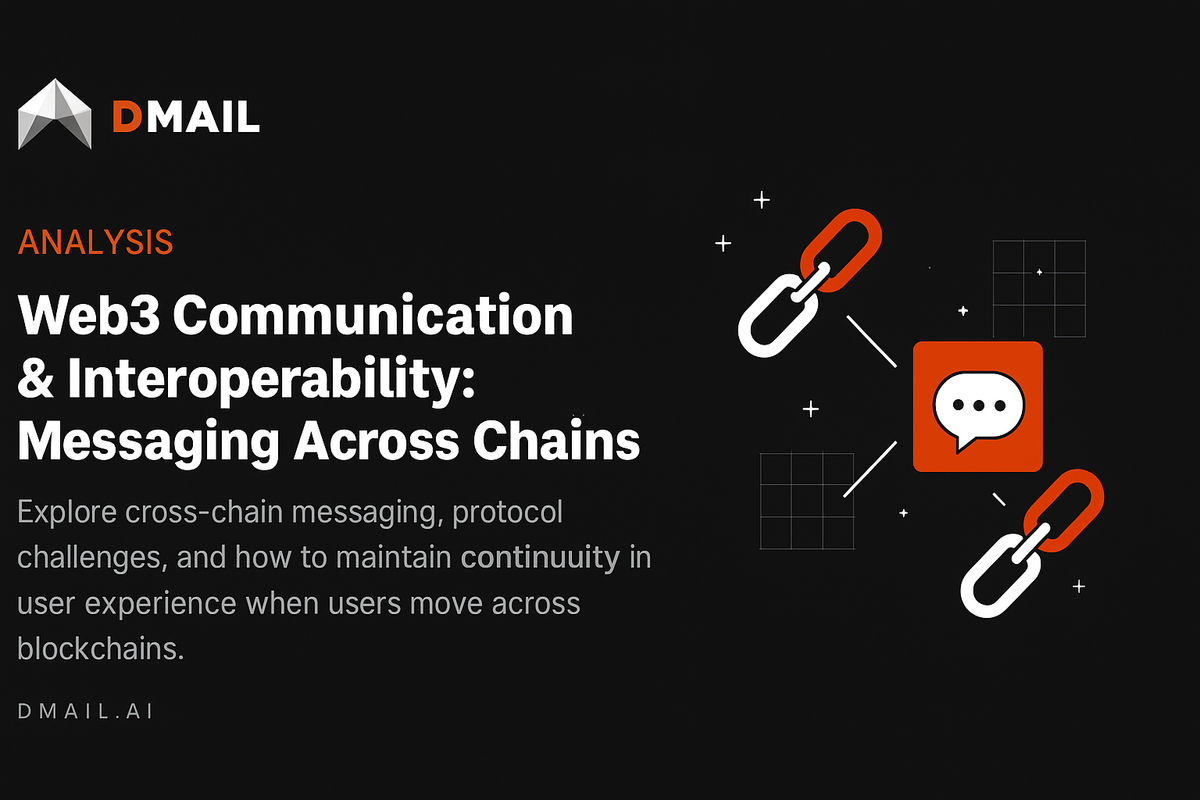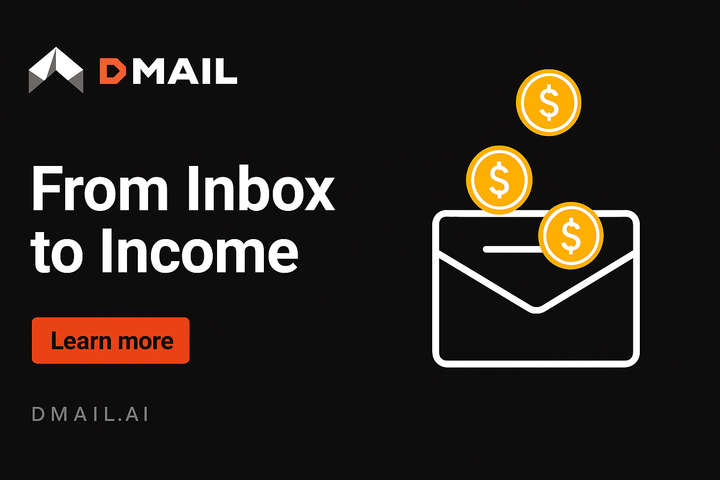Web3 Communication & Interoperability: Messaging Across Chains
DMAIL’s 40-chain deployment is not just a technical achievement—it’s a statement of intent: to unify the fragmented blockchain landscape through secure, composable, cross-chain messaging.

Exploring cross-chain messaging, protocol challenges, and how DMAIL maintains continuity in user experience across blockchains
The new frontier: communication without borders
In the multi-chain era, users move fluidly between ecosystems—Ethereum, BNB Chain, Polygon, Avalanche, and dozens more. Yet communication remains trapped in silos. Wallets, dApps, and identities are fragmented, forcing users to rebuild relationships and histories every time they change networks.
DMAIL’s mission is to eliminate these barriers. By building the communication layer that spans 40+ blockchains, DMAIL enables messages, notifications, and asset-linked interactions to move seamlessly with the user—wherever they transact, stake, or build.
Why cross-chain communication matters
For Web3 to evolve from speculation to utility, interoperability must extend beyond assets to include information flow.
Imagine the following scenarios:
- A user bridges tokens to another chain and receives an automated on-chain confirmation message in the same inbox.
- A DAO sends treasury updates to token holders across multiple networks without manually segmenting recipients.
- A game on one chain notifies a user on another that they’ve unlocked an NFT or achievement.
These interactions demand more than bridges—they require messaging coherence across heterogeneous systems. That’s the problem DMAIL solves.
The challenge: fragmentation and friction
Most blockchains were designed as isolated environments. Their message-passing logic, signature standards, and data models differ radically. Cross-chain messaging faces three persistent obstacles:
- Heterogeneous protocols – Every network defines its own event and transaction semantics. Converting these into interoperable payloads without losing meaning is non-trivial.
- Security and trust assumptions – Bridges often introduce additional attack surfaces. Trust-minimized verification of cross-chain messages is essential.
- User experience continuity – From the user’s perspective, communication should feel universal. Whether they’re on Solana or Arbitrum, their inbox, identity, and message history must remain consistent.
The technical and UX layers must evolve together.
How DMAIL solves it
DMAIL achieves interoperability through a multi-chain messaging relay framework—an architecture that connects 40+ chains with unified encryption, identity, and storage.
- Unified address schema: Wallets across supported networks are mapped to a single communication ID, allowing one inbox for all chain activity.
- Cross-chain relay nodes: Decentralized relayers propagate messages across networks, verifying authenticity via chain-specific proofs.
- Encryption consistency: Messages are encrypted at the protocol layer using the same E2E cryptographic primitives, regardless of the originating chain.
- Composable APIs: Developers can integrate DMAIL messaging into dApps to trigger wallet notifications, alerts, or verifiable user updates across any chain.
This framework abstracts away blockchain differences and focuses on what users actually want—frictionless, secure communication that follows them anywhere.
Interoperability as user retention
Cross-chain communication isn’t just a technical milestone—it’s a user retention strategy. In Web3, liquidity and users are mobile. Projects that can maintain communication continuity across ecosystems will dominate retention and engagement.
With DMAIL, communities and protocols can:
- Keep their audiences informed across all chains without centralizing data.
- Automate communication workflows triggered by on-chain events.
- Bridge ecosystem boundaries while preserving wallet-level privacy.
The more connected chains become, the more DMAIL’s role as the “universal inbox of Web3” strengthens.
The future of cross-chain messaging
The next stage for DMAIL is expanding from interoperability to programmable messaging: communication that can trigger value movement or governance actions directly across networks.
Think of it as communication as computation—messages that execute cross-chain logic securely and verifiably.
DMAIL’s roadmap already anticipates:
- ZK-enabled cross-chain verification for message integrity.
- AI-driven filtering for spam and contextual relevance.
- Developer SDKs that integrate DMAIL messaging into existing cross-chain protocols.
The goal is to make communication as portable as assets—and as intelligent as contracts.
Conclusion
As Web3 scales horizontally across dozens of chains, communication becomes the connective tissue that holds it all together.
DMAIL’s 40-chain deployment is not just a technical achievement—it’s a statement of intent: to unify the fragmented blockchain landscape through secure, composable, cross-chain messaging.
Wherever users go, their communication layer follows.
That’s the future of interoperability—and it’s already here.

Connect with Dmail: Website | Twitter | Discord | Github | Telegram





Comments ()